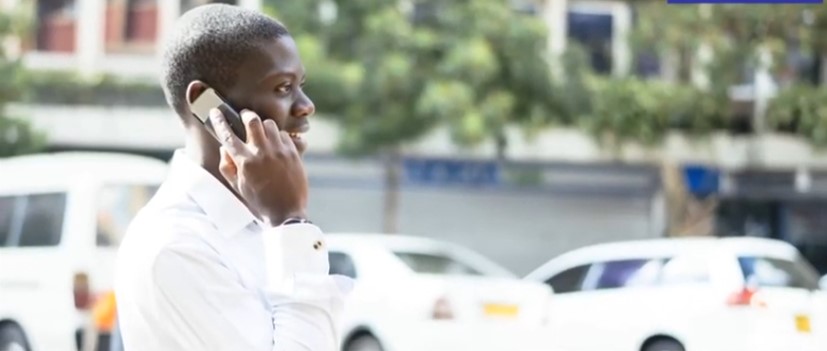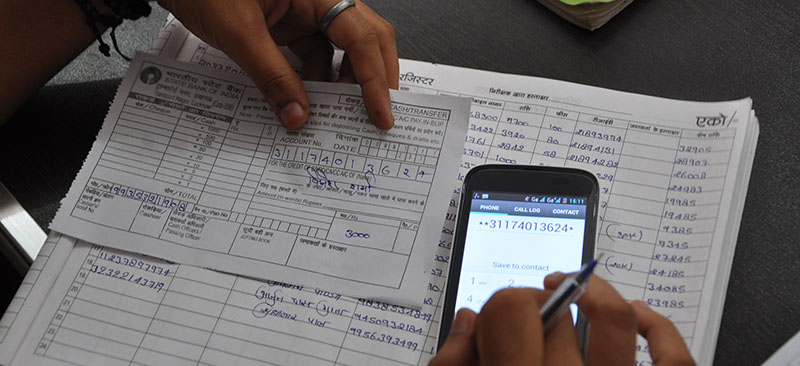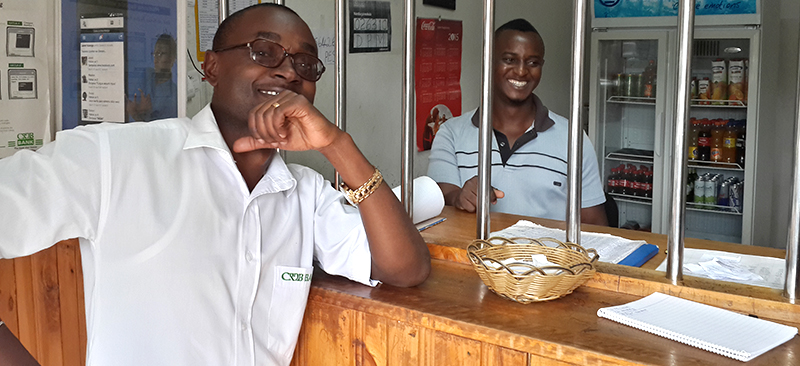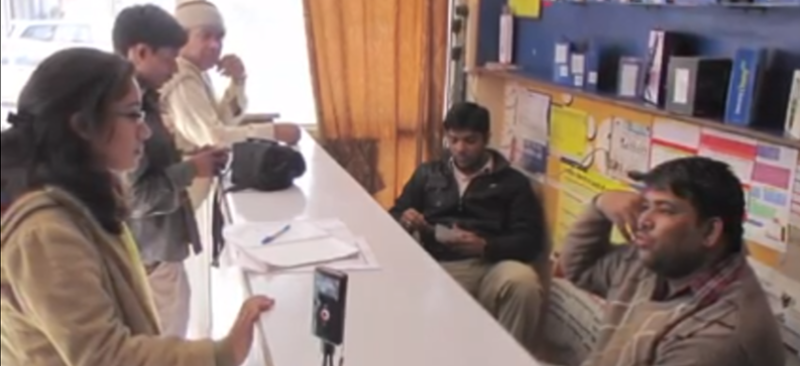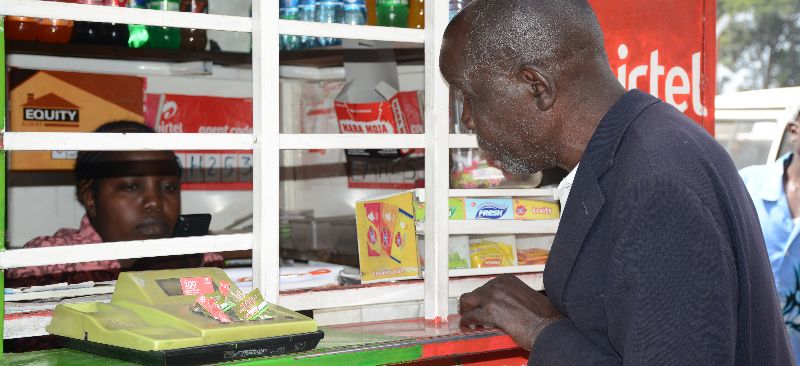https://www.microsave.net/helix-institute/Talking about the world’s most ambitious research project on agent networks, Mike McCaffrey, Head of Digital Financial Services – Africa, highlights three key trends to watch out for agent networks in 2014; inter-connectivity, liquidity tethering and fraud. Mike also introduces The Helix Institute of Digital Finance, a world-class training institute for digital finance (mobile money and mobile banking) practitioners.
Blog
Bill payments —The secret to sustainability?
We can probably all agree that “sustainability” is a very tired noun. We use it to describe our wishful hopes for everything from human life on earth to improved supply chain management. And the reason we can’t quite give it up is because our need for a more equitable and enduring ecology, economy, and society remains as urgent as ever.
Mobile banking hasn’t really achieved sustainability yet. Everyone talks about it as an almost done deal. Nevertheless, cash still trumps all. Even for the success stories like M-PESA, MTN Mobile Money, Tigo Cash, and Airtel Money. Money seldom resides on any of these phones for very long before it’s cashed out. Small emergency funds and savings don’t last long either for customers whose lives are beset with periodic, expensive crises.
No, it’s not about remittances
Remittances would certainly seem to be the steady drip that turns into reliable revenue streams for mobile operators, bank partners, and other commercial interests involved. But the sending and receiving of a percentage of migrant wages are not the enduring “customer need” on which the truly sustainable business propositions depend.
For both the workers and their beneficiaries, these payments are an emotionally fraught mix of familial duty, leverage, guilt, resentment, and social expectations. They are isolated monthly payments that, over time, can become irregular and even cease altogether. Remittances are closer to dowries and mafia protection money than they are to a utility bill. Consumers also expect, even if they begrudge, the extra fees involved in these highly personal money transfers.
No surprise, while they are acknowledged as a “pain point” (see Removing the Pain from Using Cash: An M-banking Solution?) most people balk at spending one paise or shilling or pesewa more to pay their neutral, impersonal monthly costs—water, electricity, rent, phones—by phone. “Sustainable” in this instance may actually mean giving up on the short-term (and generally minimal) profits for the long-term benefits of full adoption and use of all the services mobile banking can offer. As far back as 2010, at the MMU conference delegates from TrueMoney-Thailand, Grameen Phone-Bangladesh and Telenor-Pakistan discussed why they started with bill payments.
Embedded fees for both remittances and bill payments seem to differ, depending on the country and social norms. In most cases, any payment involving an agent and cash-out also involves an extra charge. If simply cash-in, as is the case with most bill payments, fees are lower ($.07-.35) and often waived by banks, insurance, and credit agencies. In Pakistan, where bills traditionally never include an extra cost, Telenor started off with small fees and then stopped, bowing to competitive and customer pressures.
The idea that the neutral bills—water, electricity, rent, phone—are more integral to full financial inclusion than remittances is not new. MicroSave has been writing about the potential for E-/M-Banking via remittances and ways of effectively graduating customers since 2009. Two years ago, MasterCard published Bill Payment, A Demand-Based Path to Financial Inclusion and a CGAP blog Bank-Led or Mobile-Led Financial Inclusionalso makes a strong case for bill payments as a “pain point” that both banks and telecoms should promote in their mobile service offerings. And, of course, ultimately successful digital financial service solutions need a compelling product mix.
Even so, CGAP’s 2013 year-end roundup reports air-time top-up and P2P (person to person) payments still dwarf bill payments. (The most recent figures available are 18 months old, however, and South Asia’s bill-payment adoption appear to be a full third higher than East Africa. So more current—and more comprehensive—data, including from Bangladesh’s bKash and India’s Eko, would be useful before we reach any final conclusions).
Q—and several As
The real question would seem to be why more utilities, landlords, health clinics, credit and insurance agencies, in South Asia, East Africa, and elsewhere, do not actively encourage the throngs of cash-paying customers in their lobbies every month to pay by phone and save everyone a great deal of time and trouble.
And the real answers include:
- Too many m-pay promoters (banks, mobile operators, technology service providers) still think they can and should make money off convenience and speed—and then find themselves frustrated when m-payment profits fail to quickly materialise;
- Bill payers, even those most bedevilled by cash, generally resist change and/or new technology involving personal finance.
- Accounts Receivable also worries—with good reason—about “suspense accounts” (the e-limbo where questionable receipts, disbursements and discrepancies can reside indefinitely). M-PESA’s suspense accounts are infamous.
A dearth of reliable payment gateways for mobile cash in/out transactions in these markets also poses a significant deterrent. Most readers already know of payment gateways as the online systems that authorise and coordinate e-commerce and point-of-sale credit card-purchases. But as customer adoption rates for mobile payments are less than encouraging (see above), the banks and telcos who generally underwrite and support such gateways hesitate to invest – particularly in poor areas.
Utilities and other potential payees, large and small, also delay and debate m-payment agreements without a burgeoning and eager customer base, and without the relative security and improved efficiencies most payment gateways offers.
Online payment systems had even worse problems at the outset. Sooner or later, probably sooner, either a better technology will come along for the bankers and the largest, most ubiquitous payees. Or the cost of cash for all involved will simply become too onerous.
At that point, some magic number between 16-34 percent on all three sides of the transaction triangle—customers, payees, technical/financial enablers—cross Geoffrey Moore’s notorious chasm.
And then the real benefits begin to emerge. Payment and credit delinquency go down, account activity and customer loyalty go up, grievances usually diminish, and financial capability overall seems to improve. Worthy and possibly even sustainable New Year’s resolutions for 2014.
Payment Banks: What can we learn from international experience
MicroSave’s “Payment Banks: What can we learn from international experience” is a handbook encapsulating 20 years of on-the-ground research and technical assistance; creating successful business cases while serving the mass market. The handbook provides deep insights, from across the globe, around strategy, product development, and agent network development/ management.
Beyond making payments: Managing payments
There are two glaring facts the mobile money industry needs to face up to. First, digital accounts have very little value stored in them, and the practice everywhere is to withdraw any e-money received immediately and in full. This makes people not naturally inclined to pay electronically, except for remote payments for which people will take the trouble specifically to cash in. Second, there is surprisingly little systematic use of electronic payments by formal businesses, a space in which cash and especially checks prevail, even in Kenya. The predominant business use is in fact by informal traders, though no product development is aimed at them.
These two gaps work together to limit the electronification of merchant payments. While that’s the case, mobile money will not become part of customers’ everyday life, and many providers will struggle to reach sustainable scale.
The failure in the value proposition in both cases –for savers and for businesses— is that mobile money doesn’t offer manageability tools around the money balances that are kept and the payments that are made or received. As a saver, it does not make me feel in control of my money, because it doesn’t let me separate my money out into various pots and play mental discipline games around them (jam jarring). As a business, mobile money does not make it easy for me to keep accounts, reconcile receipts with invoices, and match against things like inventory and sales leads.
We got to this situation because there is indeed very little manageability (beyond doing the actual transaction) that one can offer on simple mobile phones. But now, subject to some caveats, we can foresee the day in the not too distant future when people at the base of the pyramid, and especially traders and entrepreneurs, will all have smartphones. Moreover, by designing compelling user experiences, financial services could become an important driver to accelerate smartphone penetration in developing countries.
It is time to start thinking about a new generation of more intuitive mobile money services on touchscreen smartphones – a mobile money app. With this app, mobile money providers can offer a full upgrade path to heavier mobile money users who like the convenience of payments on the fly, but want much more interaction, structure and information around their money matters.
At the personal use level, this banking app should let people express much more visually and cogently the heuristic games they play in their own minds every time they face a money decision. In other words, it should be conceived more like a game than an internet banking site.
At the business use level, it’s about helping (formal and informal) businesses manage the information around transactions, not just helping them pay/receive money. To adopt mobile money as a way of doing business, enterprises need to make sure that payments can be tracked, reconciliations can be made, frauds can be avoided, and payments can be linked to other business processes (e.g. such as order, inventory and fleet management).
The manageability of payments on the business side will not be achieved at the handset level alone. The challenge needs to be solved by developers and integrators working on behalf of business clients. For that, they will need a set of flexible application programming interfaces (APIs) which allow them to integrate the payment flows from the mobile money system with the enterprises’ own accounting, resource and workflow management systems.
Taking mobile money to the next level has got to be about solving the savings and business use challenges. To crack that, it is time that we start experimenting with smartphone apps, supported by appropriate network-level APIs. There needs to be much more bundling of software services with payments. Only then can we really think about mobile money being not only more inclusive but also more relevant daily – and hence more impactful.
Agent Network Accelerator Survey – Uganda Country Report 2013
Our exclusive Agent Network Accelerator research reports (found under publications) are part of our global Agent Network Accelerator (ANA) Research Programme. ANA, a collaboration between MicroSave and the Bill & Melinda Gates Foundation, is the largest research project on agent networks in the world. The Uganda Country Report is based on a national representative sample of over 2,000 mobile money agent surveys carried out in 2013. The report paints a picture of the stage of maturity of the market there, focusing on the operational factors of success, and residual challenges the country still faces. To read through the report, please click here.
A Government to Person (G2P) payment delivery agent in India: At heart and in practice
This blog highlights the tasks of a CSP and the stages involved to make G2P payment delivery to the last mile – right from their (CSP) recruitment to final payment. It also suggests a few improvements recommended by CSPs.
Aalia begum and Aasia begum have been working as Customer Service Providers (CSPs) for the past three years, disbursing Social Security Pension (SSP) and Mahatma Gandhi National Rural Employment Guarantee Scheme (MGNREGS) payments in Khammam district.
They work as a team 10 days a month to make these payments and are paid around Rs. 1,000 ($16.39) which they share to meet some small household needs. While this remuneration is startlingly low, it is not untypical for rural CSP – see MicroSave Policy Brief #6 “Assessing Agent Profitability: MicroSave’s Agent Journal Studies”.
Recruitment:
ALW (A Little World)[1], the agent network manager, or “business correspondent”, was looking for SHG members as CSPs, and so both Aalia and Aasia applied to be a CSP after seeing a newspaper advertisement and consulting with their families. ALW invited all applicants to undertake a written test and selected two CSPs per village (to allow them to work in tandem and share the work).
After selection, the CSP team were trained on the enrolment and disbursement related processes. They were also trained to make payments using mobile phones and to use the biometric scan device to capture beneficiaries’ biometrics and to authenticate payments.
The merit- based selection process espoused was valuable for both ALW and the villagers, as CSPs were able to work effectively after their training. The fact that the training was (a) delivered and (b) effective is a tribute to ALW – many BC network managers in India still give little/no training and support – see MicroSave Policy Brief # 2 “The State of Business Correspondence: Agent Networks in India”.
Enrolment and disbursement:
The CSP team worked with the local council “Panchayat” officials to create awareness about the service and to choose an enrolment location. Typically, the CSPs are given the mandate to perform enrolment and disbursements but no specific place to work. Aalia and Aasia choose the Gram Panchayat (GP) office as the best place to work.
Dindora (public announcements) were made in the village t0 inform the beneficiaries about the date, time and location of enrolment. Enrolment activity was carried out intermittently over 8 months and around 70-80 beneficiaries were enrolled in a day. It usually takes 10-15 minutes to enroll one beneficiary. CSPs clocked more than 12 hours on a few days during enrolments.
After completion of the enrolment activity, the CSP team was mandated to disburse SSP and MGNREGS payments, which were earlier made by the Village Authority (VA) and Post Office (PO) respectively.
The CSP team adopted a broadly similar approach to disbursing payments as they had used for enrolment. Public announcements were ordered for payments disbursal and GP office was used as the disbursement location. Beneficiaries visited GP office to collect their payments. For elderly and handicapped people who could not make it to GP office, the CSP team traveled to their homes to authenticate and make payments.
Liquidity management:
The CSP team managed the cash liquidity during disbursement. They receive funds from ALW’s Mandal Coordinator (MC) one day before the actual disbursement. At the end of each disbursement day, the CSPs inform the MC about the payment status and the balance of cash they hold and then continue disbursement the following day. The process continues until the entire MGNREGS payments are disbursed. In contrast, SSP payments are only made for the five days, beginning from the first disbursement day – typically at the beginning of the month.
The CSP team hands over any undisbursed cash to MC at the end of each disbursement cycle.
Improvements and way forward:
The introduction of biometric authenticated transfer payments through the BC agent model has helped both the Government (to target the ‘right’ beneficiaries) and beneficiaries (to receive their full entitlement without deduction by middlemen).[2]
CSPs have become an integral part of the ecosystem to reach the last mile. They represent the stakeholders on ground and a touch point for the beneficiaries. However, in the current set up, CSPs feel are overstretched and under compensated. Aalia and Aasia highlight a few possibilities for areas improvement:
First – they are overburdened as they are asked to undertake a large number of activities in a limited window of time. The disbursement period lasts for only 10 days each month. SSP payments are disbursed the first 5-6 days; while the timing of MGNREGS payments varies each month. During these 10 days, the CSPs work for over 10 hours and perform over a hundred transactions[3] per day.
Second – they are not provided with much assistance from the bank or ALW. G2P agents are not provided with any work location, marketing collateral or signage to represent the BC agent deployment. This leaves the CSPs to promote the disbursement activity themselves. In most cases, they do get help from the local Panchayat officials but feel that the bank and ALW should play a larger, more supportive role.
Third – they are not adequately compensated for all their efforts. Several CSPs including, Aalia and Aasia, are paid very little (Rs.500 or $8.20 each for 10 days’ work) considering the services they required to offer – see MicroSave Policy Brief # 9 “Behind the Big Numbers: Improving the Reach and Quality of Agent Networks in India”. That said, what keeps them in the job is not the financial earnings but the connection to the outside world. They enjoy the interactions with Government officials and ALW staff, and the recognition from fellow villagers for being a CSP.
Fourth – they are tasked to manage several operational and process-related risks/delays. It remains CSP’s responsibility to complete disbursements within the stipulated time. During this, issues arise such as failed biometric authentication[4] and other technological glitches that cause delays. They need improved operational support to tackle these issues.
Fifth – they are not provided with adequate training or opportunities to offer other services. The current system is only used to make disbursements. Neither the CSP nor the beneficiary views this as a banking channel. Increased business opportunities in the form of savings or insurance (and possibly eventually even credit) backed by improved training could aid CSPs to augment the services they offer, and thus increase opportunities to earn income. – see MicroSave Briefing Note 65 “Successful Banking Correspondents Need a Compelling Product Mix” and Briefing Note 97 “How to Make Optimum Use of Agent Networks (1/2)”.
[1] ALW is a Business Correspondent deployment that uses mobile-based technology through which CSPs use mobiles to transact and biometric scan device to capture biometrics and to authenticate payments.
